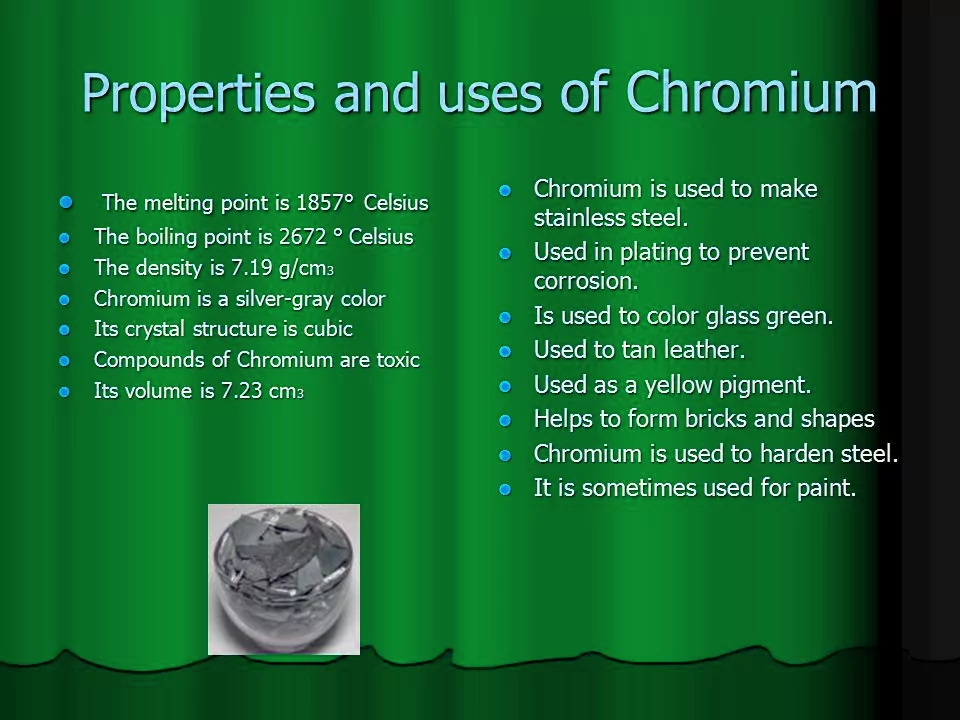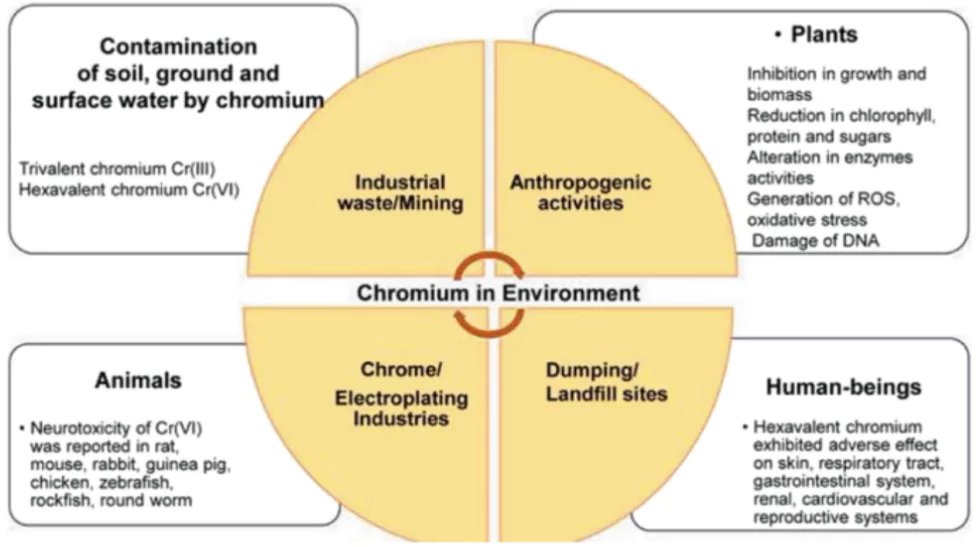The National Green Tribunal (NGT) Kolkata bench directed the Central Ground Water Board (CGWB) to investigate groundwater contamination in Sukinda Valley, Jajpur district, Odisha.

- It is a Shiny, hard metal with a silver-grey color.
- Melting Point: High.
- Source: Obtained from chromite ore.
- Symbol and Atomic Number: Cr, 24.
- Hardness: Third hardest element after carbon (diamond) and boron.
- Forms of Chromium About Chromium
- Trivalent Chromium (Cr(III)): Safe for humans.
- Hexavalent Chromium (Cr(VI)): Toxic.
- Trivalent Chromium (Cr(III)): Uses and Benefits
- Trivalent Chromium Sources: Found in foods and supplements.
- Blood Sugar Regulation: May help maintain normal blood sugar levels by improving insulin use.
- Potential Benefits: Claimed to help with diabetes, high cholesterol, athletic performance, and bipolar disorder, though most claims lack strong scientific evidence.
- Hexavalent Chromium (Cr(VI))
- Toxicity: Highly toxic, harmful to human health, environment, and biodiversity.
- Source: Mainly produced by human activities.
Enroll now for UPSC Online Course
What is Chromium Pollution?
The Contamination of soil, water, and air with excessive levels of chromium compounds.
- Main Concerns:
- Soil: Disrupts soil quality and affects plant growth.
- Water: Pollutes water sources, making them unsafe for consumption and harming aquatic life.
- Air: Can lead to respiratory problems and other health issues when inhaled.
-
Sources of Chromium Pollution
-
- Industrial Activities: Chrome plating, leather tanning, and stainless steel production release Cr(VI) into the environment.
- Mining and Smelting: Chromite mining and ferrochrome production contribute to chromium pollution.
- Waste Disposal: Improper disposal of chromium-containing waste leads to environmental contamination.

Check Out UPSC CSE Books From PW Store
Sukinda Valley Area
- Sukinda Valley in Odisha contains 97% of India’s chromite ore deposits.
- It is also known as the land of “black diamond”.
- Water Contamination:
-
- Approximately 70% of surface water and 60% of drinking water contain hexavalent chromium at levels more than double national and international standards.
- The Brahmani River, the main water source for residents, is heavily contaminated.
|
![]() 13 Jul 2024
13 Jul 2024


